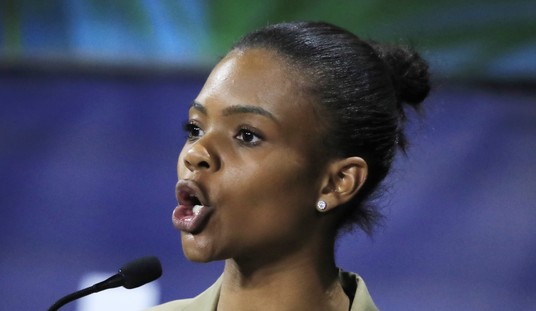Last week, while most media were focused on Syria and the G-20 summit in Russia, another significant step was taken towards the UN’s long-standing goal of enveloping the world in a Kyoto Protocol-like climate change agreement.
From September 3-5, the 44th Pacific Islands Forum (PIF) — the region’s major political and economic policy institution — was held in Majuro, in the Marshall Islands. The PIF has 16 member states: 14 Pacific Islands countries, plus Australia and New Zealand. Before the meeting, European Climate Action Commissioner Connie Hedegaard declared that the Pacific region could count on Europe’s money if the Pacific helped the European Union’s efforts to bring about “an ambitious future climate regime to be finalized in 2015.”
Even in Europe, which has largely succumbed to environmental extremism, it is becoming increasingly difficult to convince people that humanity controls the climate of planet Earth. How are governments supposed to persuade the public to allow continued vast spending to stop global warming when temperatures have been stable for at least 15 years? How do they sell the notion that sea level is rising dangerously when anyone with an internet connection can see that it has been stable or only slightly rising over the past decades?
Clearly, Europe needs support in their promotion of another Kyoto, and they are willing to pay for it. The EU and its member states are already the second largest donor in the Pacific region, after Australia. Since the EU and the PIF adopted a Joint Declaration on Climate Change in 2008, hundreds of millions of euros have been transferred to Pacific Islands developing states.
These states benefit enormously from the EU’s Global Climate Change Alliance initiative; not surprisingly, the PIF gave Hedegaard exactly what she wanted. They focused this year’s forum on climate change, titling the event “Marshalling the Pacific Response to the Climate Challenge.” As host nation, the Marshall Islands aimed to create the Majuro Declaration for Climate Leadership, “intended to give a new momentum to the region’s fight against climate change,” the European Commission asserted in a pre-forum press release. “The Pacific leaders have identified climate change as the single greatest threat to the region. Low-lying Pacific islands are particularly vulnerable to sea level rise caused by climate change.”
The PIF opened with high-level speeches following the script desired by the EC. The out-going chair, Prime Minister of the Cook Islands Henry Puna, asserted:
There is no doubt — particularly among our low-lying countries — of the severity of the threat of the impacts of Climate Change and the extreme vulnerability of the Small Islands Developing States of our Region.
Pacific Islands Forum Secretary General Tuiloma Neroni Slade proclaimed (here and here):
Climate change is a real and most serious threat to the livelihoods, security and well-being of the peoples of the Pacific. … Climate change will remain … unquestionably a priority of the highest concern for SIS [Small Island States] countries.
While the body of the final Forum Communiqué said little about climate change and sea level, the leaders agreed to an Annex to the main document that included the text of the Majuro Declaration for Climate Leadership. They introduced it as follows:
The Declaration is intended to highlight the Leaders’ strong political commitment to be the region of Climate Leaders, and is an effort to spark a new wave of climate leadership that accelerates the reduction and phasing down of greenhouse gas pollution worldwide.
Aside from their mistaken use of the phrase “greenhouse gas pollution” — the main greenhouse gas is water vapor and the one of most concern to alarmists is carbon dioxide, neither of which is pollution — the Majuro Declaration is written in a different style than the generally sensible Forum Communiqué. In particular, the declaration — almost certainly constructed by Commissioner Hedegaard herself before the meeting began — is replete with the climate propaganda we often hear from the EC and the UN. As is usually the case with EC and UN climate documents, the language of the declaration is often meaningless, sensationalized, and riddled with mistakes. Here are examples:
Climate change has arrived. It is the greatest threat to the livelihoods, security, and well-being of the peoples of the Pacific.
This is nonsense. Climate change “arrived” when the atmosphere first formed billions of years ago. It has changed — sometimes quickly, sometime slowly — ever since. To say this is the “greatest threat to the people of the Pacific” ignores the results of studies such as the Copenhagen Consensus, which demonstrated how problems such as malnutrition, disease, sanitation and water supply, lack of electricity, education, terrorism, and other concerns easily trump the hypothetical future concern of dangerous human-caused climate change.
There is an overwhelming scientific consensus that escalating greenhouse gas emissions continue to cause the sharp rise in average global temperatures over the past century, the alarming acidification of our oceans, the rapid loss of polar sea ice, sea-level rise, and the striking incidence of more frequent and extreme weather events all over the world.
There is no “overwhelming scientific consensus” about virtually anything in the climate change field. The science is far too immature for anything to yet be settled in this, arguably the most complex science ever tackled. Regardless, “global temperature” (really, just a statistic) rose only about 0.8C over the past century, an amount too small to be noticed by the average person. The causes of this increase are intensely debated within the climate science community, with many experts concluding that natural cycles dominate the impacts of human activity. Oceans have indeed become slightly less basic, although the change is minute, and far less than the changes many marine environments experience in the course of a day.
Polar sea ice has increased steadily in the Antarctic region since measurements began, and has recovered significantly in the Arctic this year over last.
Sea level rise has been occurring since the end of the last glacial period 10,000 years ago, is far slower now than in past millennia, and is not accelerating in recent years.
Violent weather events are generally not becoming more frequent or extreme across the world.
In crossing this historic threshold [400 parts per million by volume (ppmv) of carbon dioxide], the world entered a new danger zone. Unless we quickly change course, global average temperatures are projected to rise by 4°C or more above pre-industrial levels by the end of the Century, resulting in unprecedented human and environmental impacts.
The 400 ppmv level has been exceeded many times in the past half billion years with no catastrophic result. Indeed, we are currently at one of the lowest concentrations of CO2 in the atmosphere over this time frame.
Further, the computerized climate models which make dire temperature rise forecasts decades in the future have proven unable to reliably forecast climate change even a few years ahead, and so have little forecasting skill.
We confirm the responsibility of all to act to urgently reduce and phase down greenhouse gas pollution in order to avert a climate crisis for present and future generations.
This is simply rhetoric designed to please the region’s primary climate change sponsor — the EU.
In an effort to create the political will for the world to adopt legally binding climate change targets by 2015, the Majuro Declaration for Climate Leadership site has been set up to collect endorsement from anyone, anywhere. Their intent is to recruit governments, cities, the private sector, and civil society “to commit to be Climate Leaders by listing specific commitments that contribute more than previous efforts to the urgent reduction and phase-down of greenhouse gas pollution.” Employing guilt-generating language, the site attempts to put a human face on the supposed crisis unfolding:
Here in the Pacific, droughts, floods, cyclones, and rising seas are destroying our homes and jeopardizing our future … a set of spiraling impacts that would cause havoc in the Pacific region.
As expected, Western leaders are quickly endorsing the declaration. The UK boasted that they were the first, but the U.S. was not far behind. At a “Post-Forum Dialogue,” U.S. Secretary of the Interior Sally Jewell stated that the Obama administration will sign the declaration. The reason she gave for this is quite remarkable:
Climate change is going to have wide ranging impacts all over our globe and that’s something that we are already seeing, particularly here as I flew into the airport and saw the sandbags from the last time the water inundated the runway (in Majuro).
As can be seen by the Majuro tide gauge record below, there have been stable sea level conditions in the region over the last 20 years. The inundation the secretary talked about was just an extreme storm event, which all coastal sites occasionally experience. It has nothing to do with sea level rise or climate change:
Marshall Islands President Christopher Loeak will present the Majuro Declaration to UN Secretary-General Ban Ki-moon in New York during General Assembly Leaders’ week starting on September 23. The declaration will be a “Pacific gift,” organizers say, “a platform for an upward spiral of action to urgently reduce and phase down greenhouse gas pollution.”
The financially challenged EU has successfully bribed Pacific Small Island States so that they can be used as an instrument to lead the developed world even further into a black hole of green debt.










Join the conversation as a VIP Member